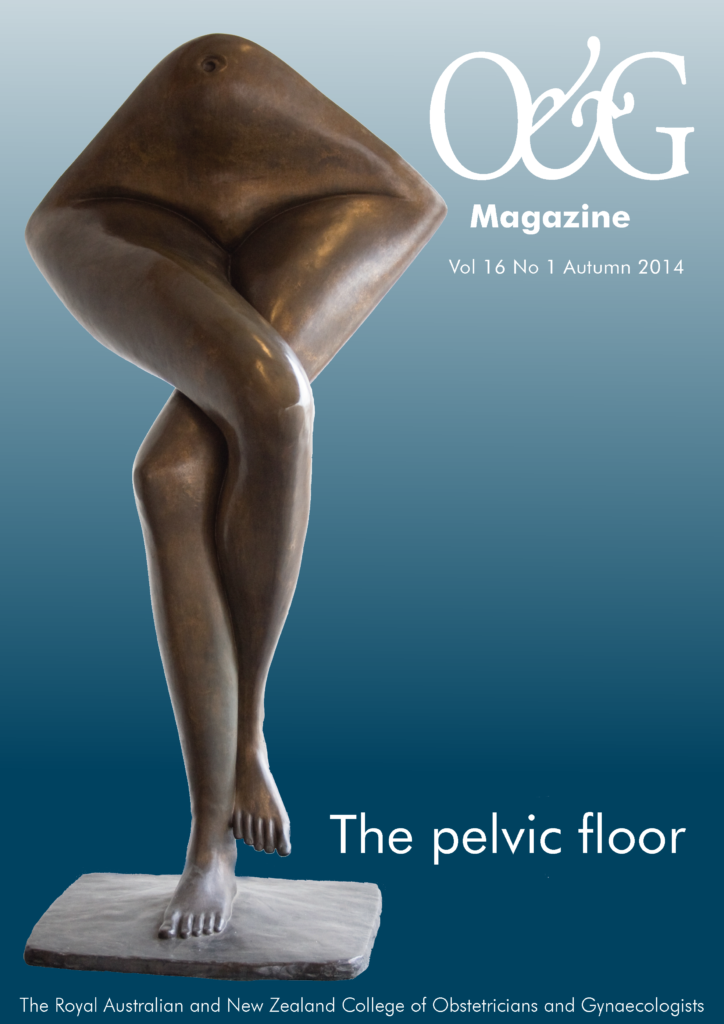Had time to read the latest journals? Catch up on some recent O and G research by
reading these mini-reviews by Dr Brett Daniels.
Treatment of VIN
In 2004, the International Society for the Study of Vulvovaginal disease classified vulvar intraepithelial neoplasia (VIN) as: a usual type more commonly occurring in younger women and associated with human papillomavirus (HPV); and a differentiated type more commonly associated with vulvar dermatoses such as lichen sclerosus. Treatment of high-grade VIN has previously been surgery, but this may lead to anatomical and sexual dysfunction. In recent years, less destructive treatments, such as laser ablation and topical treatment using the immune response modulator imiquimod, have been introduced. Frega et al1 report on treatment outcomes for 80 women with high-grade usual type VIN. Half of the women were initially treated with surgery while the other half applied five per cent imiquimod cream twice a week for 16 weeks. Women in the imiquimod group received a second cycle of treatment if their disease persisted after one cycle and surgery if the disease persisted after two cycles. Women were followed up every six months for five years. In the surgery group, 45 per cent had a recurrence of disease following being disease free after initial treatment. The equivalent relapse rate was for the imiquimod group was 16 per cent, however, a further 53 per cent of that group required conversion to surgical treatment. Overall, 55 per cent of the women in the surgery group showed complete response to treatment, while 31 per cent of the imiquimod group showed complete response. Wallbillich et al2 report a retrospective chart review of 313 women with VIN 2-3 treated with excision, laser or imiquimod, or combinations of excision with laser or imiquimod. Significantly higher rates of recurrence were associated with laser (42 per cent), compared with imiquimod (14 per cent) or excision (26 per cent). Smoking, larger lesions and unclear margins were all significantly associated with disease recurrence. As a non-randomised chart review there may be reasons for these differences that may not be seen in a randomised design.
- Frega A, Sesti F, Sopracordevole F, et al. Imiquimod 5 per cent cream versus cold knife excision of VIN 2/3: a five year follow-up. European Review for Medical and Pharmacological Sciences. 2013. 17: 936-940.
- Wallbillich JJ, Rhodes HE, Milbourne AM, et al. Vulvar intraepithelial neoplasia (VIN 2/3): comparing clinical outcomes and evaluating risk factors for recurrence. Gyn. Oncology. 2012. 127: 312-315.
Timing of umbilical cord clamping
The timing of clamping and eventual cutting of the umbilical cord after delivery requires a number of considerations. Early cord clamping, generally within 60 seconds of delivery, has sometimes been promoted as part of active management of the third stage of labour, with the aim of reducing maternal blood loss and the risk of postpartum haemorrhage. Conversely, delayed cord clamping -waiting until the cord has stopped pulsating or for greater than one minute after delivery – has been associated with improved neonatal outcomes, including increased neonatal haemoglobin and iron stores. The WHO guidelines, most recently updated in January 20141, recommend clamping one to three minutes after birth while simultaneously initiating neonatal care. They suggest the cord should not be clamped earlier unless the baby is asphyxiated and needs to be moved for resuscitation.
A recent Cochrane review by McDonald et al2 on the timing of cord clamping is cited on the WHO statement. The review included 15 trials involving 3911 women. They found that while no studies reported the effect of cord clamping on maternal death or serious morbidity, there was no significant effect of early versus late cord clamping on postpartum haemorrhage, mean blood loss, use of uterotonic drugs or maternal postpartum haemoglobin. For the neonate, however, there was a significantly increased haemoglobin concentration in the first 24–48 hours in the late clamping group and better iron stores at three to six months. Fewer infants in the early clamping group experienced neonatal jaundice compared to the late clamping group, possibly owing to a lower risk of increased red blood cells being metabolised and resulting in higher jaundice levels. The authors conclude that a more liberal approach to cord clamping should be employed, particularly in resource-rich environments where access to treatment for neonatal jaundice is readily available.
- World Health Organization. Cord clamping for the prevention of iron deficiency anaemia in infants: optimal timing. www.who.int/elena/titles/cord_clamping/en/. Updated 22 January 2014. McDonald SJ, Middleton P, Dowswell T, et al.
- Effect of timing of umbilical cord clamping of term infants on maternal and neonatal outcomes (Review). Cochrane Database of Systematic Reviews. 2013, 7. Art. No.: CD004074. DOI: 10.1002/14651858.CD004074.pub3.
Metformin for gestational diabetes
An increasing number of pregnant women are diagnosed with gestational diabetes mellitus (GDM). Corbauld et al1 write approximately 16 per cent of women will be diagnosed with GDM under the new guidelines. While traditional treatment of GDM with diet and insulin are associated with better pregnancy outcomes, in recent years there has been research in the use of oral hypoglycaemic agents, such as metformin, in pregnant women.
The Metformin in Gestational Diabetes (MiG) trial by Rowan et al2 randomly allocated 751 women with GDM to receive either insulin or metformin. Of the 363 women assigned to metformin, 92.6 per cent continued to receive metformin until delivery and 46.3 per cent received supplemental insulin.
The outcome was a composite of neonatal hypoglycemia, respiratory distress, need for phototherapy, birth trauma, five-minute Apgar score less than 7, or prematurity. The rate of the composite outcome was 32.0 per cent in the metformin group and 32.2 per cent in the insulin group. Significantly more women in the metformin group indicated that they would choose to receive their allocated treatment again compared to the insulin group (77 per cent versus 27 per cent). There were no significant differences between the two groups in secondary measures, such as neonatal measurements, maternal glycaemic control and postpartum glucose tolerance, and no adverse effects associated with metformin. A 2008 paper by the same authors3 followed up the offspring from the original study at two years of age. There were 318 children in the study. The metformin group had significantly larger upper circumferences and subscapular and bicep skin folds, but no greater total body fat. The authors postulate that if different body fat distribution is maintained into later life then it may result in a lower level of visceral fat and adult diabetes.
Corbauld et al1 reported a small audit of 71 women with GDM in an attempt to determine which characteristics were associated with the need to add insulin to the treatment of women who were initially treated with metformin. Of the 25 women in the study who initially chose to receive metformin, seven required insulin to achieve adequate glycaemic control, while two changed to insulin owing to gastrointestinal side effects of metformin. The study found that there was a significant relationship between a fasting blood glucose of >5.2 on the oral glucose tolerance test, and the need to change to insulin to achieve glycaemic control. The authors conclude that while metformin has a place in the treatment of GDM there may be some benefit to targeting it to appropriate patient populations.
- Corbauld A, Swinton F, Radford A, et al. Fasting blood glucose predicts response to extended-release metformin in gestational diabetes mellitus. ANZJOG. 2013. 53: 125-129.
- Rowan JA, Rush EC, Obolonkin V, et al. Metformin in gestational diabetes: The offspring follow-up (MiG TOFU). Diabetes Care. 2011, 34:2279-2284
- Rowan JA, Hague WM, Gao W, et al. Metformin versus insulin for the treatment of gestational diabetes. NEJM. 2008. 368: 2004-2015.






Leave a Reply